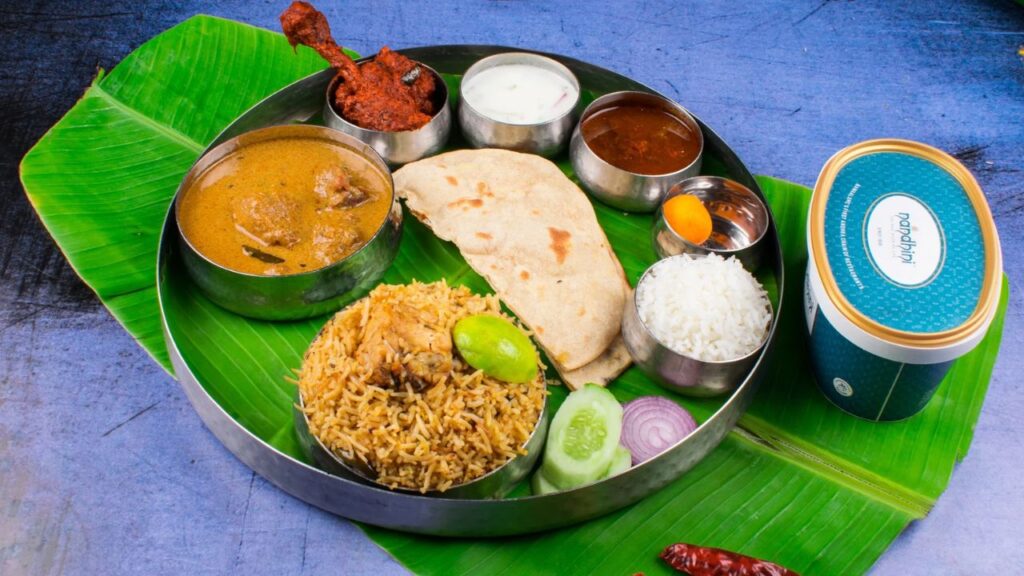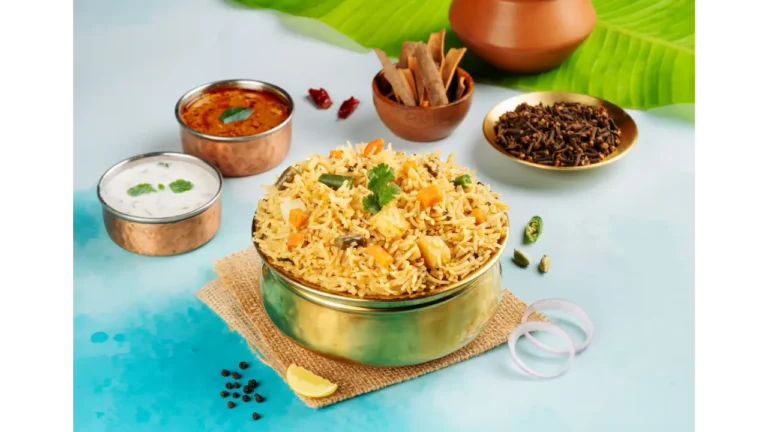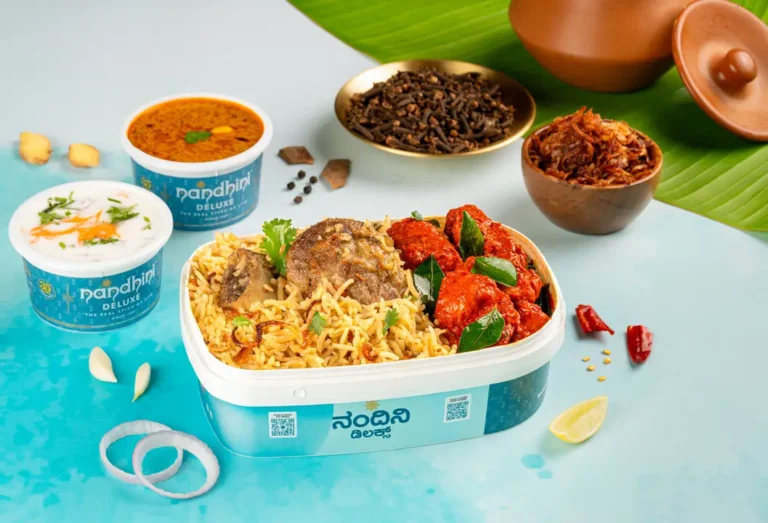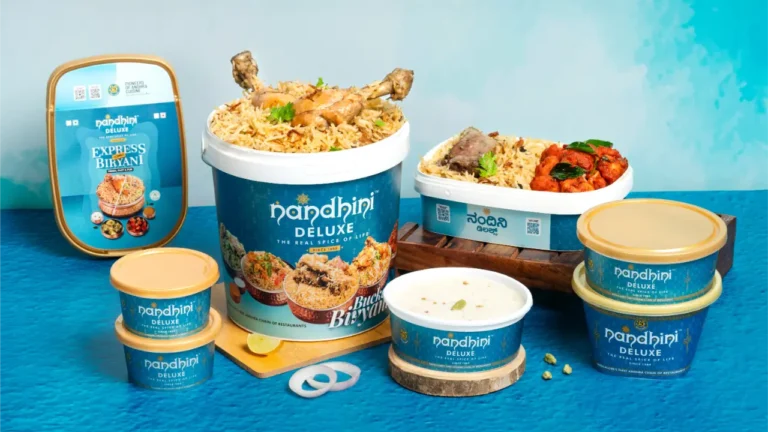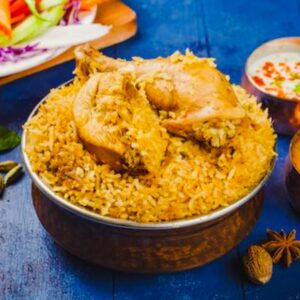Introduction
Andhra Cuisine Thali in Bangalore functions as a calibrated system rather than a loose assortment of plates. The format uses banana-leaf service, a clear order of pours, and a refill rhythm that keeps heat inside a comfortable band while protecting variety. Set components such as rice, pappu, sambar, rasam, poriyal, pachadi, podi with ghee, appadam, curd, and a sweet anchor the experience for veg diners. Non-veg tracks add a protein gravy and often a fry item, raising richness and bumping the spice curve by one notch. Guntur chilli cultivars define the heat signature, with Teja shaping quick spikes in podis and fry add-ons, and Sannam 334 delivering stable warmth and strong color in gravies.
Pricing follows a simple logic. A base thali covers staples, with clear pathways to add proteins, extra ghee or curd, and festival desserts. Lunch hours typically move faster for office corridors around MG Road and Residency Road, while dinners in Indiranagar or Koramangala invite slower pacing and more add-ons. Multi-branch operators such as Nandhini Deluxe keep the thali architecture consistent across neighborhoods, so diners can predict composition, heat band, and service cadence before a plate lands.
This guide describes the thali as a set of cooperating entities. Each element carries a role. Podi and pickles provide intensity in micro-doses. Ghee and dairy regulate capsaicin. Rice and ragi sangati supply volume control. With a little sequencing, even mixed-tolerance tables can enjoy the same leaf without compromise.
Key Takeaways
- Andhra thali is a system with staples, refills, and a predictable service rhythm.
- Teja drives quick heat in podis and fries. Sannam 334 balances gravies.
- Veg covers breadth and comfort. Non-veg adds protein gravies and fry intensity.
- Pricing is modular with base, add-ons, and festival upgrades.
- Nandhini Deluxe standardizes composition and spice bands across Bangalore branches.
Table of Contents
What an Andhra Cuisine Thali Includes in Bangalore
A Bangalore Andhra thali follows a structured template that balances heat, acidity, and comfort. The banana leaf is laid with salt, pickle, and podi at the top rim for measured access. Rice occupies the center so ghee can be folded in before gravies arrive. A staff prompt often cues that first ghee dot, which softens incoming chilli.
Core staples appear in nearly every service window. Pappu supplies protein and starch synergy, keeping early bites soothing. Sambar and rasam present two gradients of tang and heat, with rasam usually brighter and quicker on the palate. Poriyal or a seasonal vegetable offers texture contrast. Pachadi and pickle bring concentrated intensity in teaspoon portions. Appadam adds crisp relief between mouthfuls. Curd concludes the sequence and stabilizes spice memory. A simple sweet or payasam closes the meal, signaling that the heat arc has ended.
Rotational items vary by daypart and branch. Tomato pappu may swap in for plain pappu. A second sabzi or a kootu sometimes joins at dinner. Ragi sangati appears as an add-on for diners who prefer heavy volume control with hot gravies. Refill policy is explicit. Rice, sambar, and rasam typically refill on request. Staff read empty zones on the leaf as a cue and move in sync with diner pace.
Heat management is built into the format. Ghee reduces capsaicin immediately. Curd or buttermilk offers sustained relief during later bites. Podi increases intensity only when mixed with fat. Pickle remains a spike tool, never a full side. The result is a thali that rewards measured sequencing and lets diners shape each round of rice to a preferred spice band without losing the core Andhra identity.
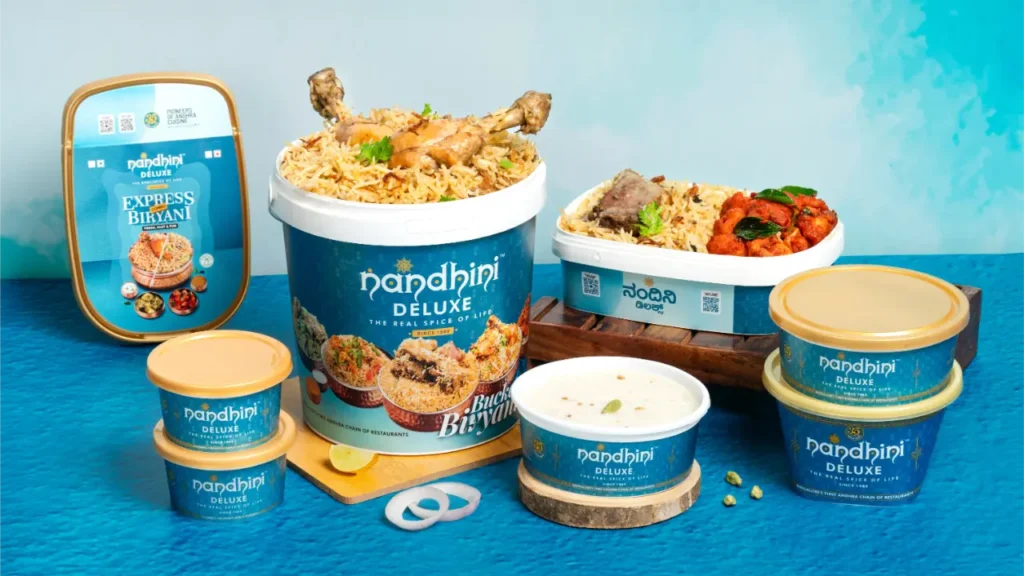
Veg Thali vs Non-Veg Thali
Vegetarian and non-vegetarian thalis share a base but express different arcs of richness and heat. The veg thali prioritizes breadth. Pappu, sambar, rasam, poriyal, pachadi, podi with ghee, appadam, curd, and a sweet create a wide flavor field with moderate spice. Sannam 334 usually powers gravies for warm color and a steady climb. The podi corner supplies optional intensity when folded into ghee. This format suits diners who enjoy progression and control, since the heat can be dialed by portioning podi, pickle, and ghee per rice round.
The non-veg thali treats the veg base as a platform, then adds a protein gravy and sometimes a fry component. Chicken or mutton curry lifts umami and pushes the spice band higher. Fish pulusu introduces a tamarind-led body that clings to rice for longer burn time. If a fry item appears, Teja-led rubs raise immediacy and produce a crisp, oil-phase burn that lasts between bites. Curd becomes more important here, as casein helps manage capsaicin carried by fat. Lemon wedges on request wake aroma for fry plates without elongating burn.
A simple matrix helps selection. Mild preference points to veg thali with restrained podi use and a ghee-first approach. Medium preference aligns with veg thali plus one fry add-on shared at the table. Hot preference fits non-veg thali with a protein gravy and a limited fry portion, buffered by extra curd. Mixed-tolerance groups can balance both by sharing a non-veg thali for highlights while retaining a veg thali for comfort and refills. Branches with consistent architecture, such as Nandhini Deluxe, make these swaps predictable, so decision time shortens and table satisfaction improves across lunch and dinner windows.
Price Guide and Portion Planning
Pricing for Andhra thalis in Bangalore follows modular logic that aligns with appetite, daypart, and add-ons. A base thali covers staples at a value-friendly entry point, with optional upgrades for protein gravies, fry items, extra ghee, curd bowls, and festival sweets. Lunch windows around CBD corridors often price tightly to move office traffic, while dinner services in residential hubs may feature expanded rotations or weekend specials. Transparent menus list the core set and clearly mark extras so diners can assemble the right spread without guesswork.
Portion planning depends on group size. Solo diners gain the most from a straight veg thali with the option of one fry add-on. Pairs typically combine a veg thali for breadth with one non-veg gravy or fish pulusu, splitting cost while keeping variety high. Tables of four find balance with two veg thalis as baselines, one non-veg thali for protein depth, and a single fry plate for intensity. Larger groups can treat thalis as anchors and add focused sides, minimizing waste while maintaining heat control through shared curd and ghee.
Per-head calculators help. A veg baseline plus one shared add-on usually lands at a moderate spend with predictable refills for rice, sambar, and rasam. Non-veg increments price slightly but also lift satisfaction for spice-forward diners. Festival days may introduce dessert upgrades or premium proteins; signaling these in advance supports commercial investigation intent and reduces table friction. Delivery orders benefit from medium-thick gravies that travel well and a separate raita or curd pack to keep heat in range after transit.
Savings appear in smart sequencing rather than discounts. Starting mild, using podi selectively, and deploying curd only when needed stretches the meal without additional spend. Reliability across branches such as Nandhini Deluxe shortens decision time: the same architecture, similar price bands, and consistent refill norms let diners predict outcomes and allocate budget with confidence across lunch breaks, family dinners, and weekend meetups.
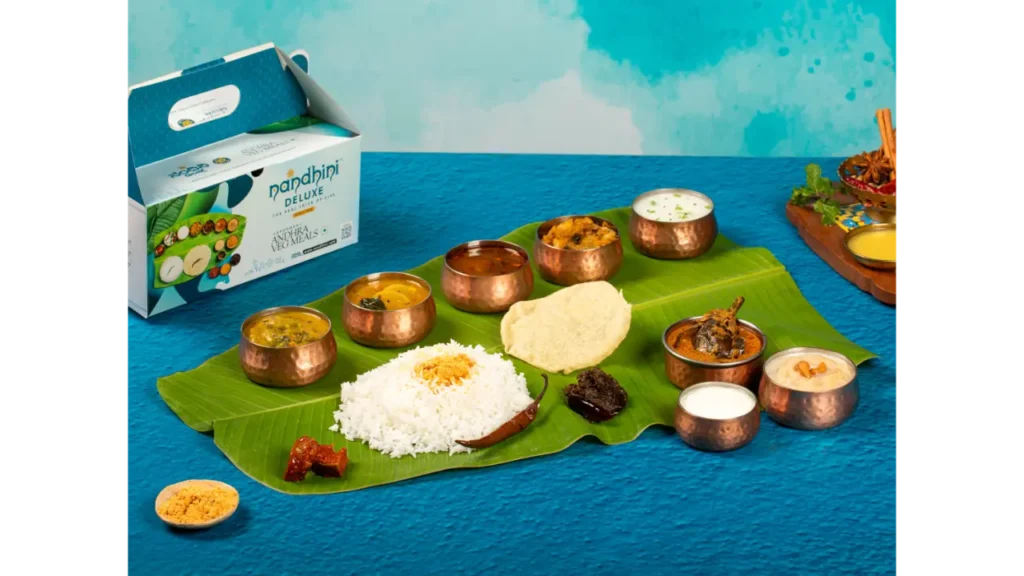
The Role of Chilli Cultivars in Thali Heat
Thali heat is not random; it is engineered through cultivar choice and placement. Guntur Teja drives quick, bright spikes. In thali contexts, Teja shows up where immediacy matters: podis, tadkas for rasam, and fry add-ons that sit beside the leaf. A small amount shifts a bite from mild to hot, especially once mixed with ghee, which spreads capsaicin efficiently across rice.
Sannam 334 carries medium-high warmth and dependable color. Gravies such as sambar or a non-veg curry favor Sannam because it releases pigment steadily and keeps heat stable during service. In high-volume branches, this predictability protects flavor clarity from first plate to last. Sannam’s role becomes most obvious when rice refills arrive; color remains vivid without the harshness that can appear with overuse of hotter cultivars.
Blends solve edge cases. A Sannam base with a touch of Teja brings definition to a tomato-forward pappu or a weeknight chicken curry. Byadgi in small fractions adds aroma and deep red without pushing heat beyond the comfort band. Grind size and timing matter as much as cultivar. Medium granularity in podi aids grip on ghee-coated rice, while too-fine powders risk caking and dulling texture. Late-stage tempering preserves volatile notes, ensuring rasam tastes lively rather than flat.
Perception also depends on fat and acid. Teja reads sharper in oil-rich fry items and brighter under lemon. Sannam feels rounder in tamarind-backed gravies. This mapping explains why a veg thali with generous podi can taste hotter than a non-veg set with balanced gravy: placement and medium, not just quantity, define the burn. Branches that standardize these choices create recognizable heat signatures, allowing diners to select veg, non-veg, or mixed orders with clear expectations about spice behavior.
Cooling Pairings and Sequencing That Work
Cooling in an Andhra thali is built into the plate, not added as an afterthought. Ghee lands early because fat dissolves capsaicin fast. Folding a pea-sized dot into hot rice before gravies arrive sets a protective base that keeps the first round gentle. Perugu and majjiga bring casein to the table, binding capsaicin and providing sustained relief during mid-meal spikes, especially when a fry item raises oil-phase intensity.
Starch is the volume control. Rice absorbs heat and spreads flavor; ragi sangati adds density that drops peaks more decisively, useful when a fish pulusu clings to grains. Curd should sit beside, not inside, crisp items to avoid softening texture. Lemon acts as a brightness tool rather than a rescue; applied on fry just before eating, it lifts aroma without lengthening burn. In gravies, heavy lime can sharpen perception, so a curd chaser balances the effect.
Sequencing anchors comfort. Begin with rice, pappu, and a small ghee fold. Add sambar for body, then rasam for lift. Introduce a protein gravy or fry once the palate is calibrated. Use podi as a targeted amplifier in the final third of the meal, when diners can gauge tolerance accurately. Pickles remain micro-doses, placed at the rim for deliberate use. A sweet finish or payasam signals closure and cools residual warmth with temperature and viscosity.
For mixed-tolerance tables, a shared plan works smoothly. Keep a curd bowl and extra ghee within reach, serve the fry plate centrally in modest portions, and ladle gravies in smaller rounds that can be scaled up or down. This matrix preserves the identity of Andhra flavors while making heat adjustable in real time. Standardized service cadence at operators like Nandhini Deluxe helps the sequence click into place, turning each thali into a predictable, satisfying arc from first pour to last refill.
FAQs
Q1: What is typically included in a veg Andhra thali in Bangalore?
Rice, pappu, sambar, rasam, poriyal, pachadi, podi with ghee, pickle, appadam, curd, and a sweet are staples, with some items rotating by day.
Q2: How is a non-veg Andhra thali different from the veg option?
It builds on the veg base by adding one protein gravy such as chicken, mutton, or fish pulusu, and sometimes a fry item as an add-on.
Q3: Are refills included in Andhra thali service?
Yes. Rice, sambar, and rasam are typically refillable, while protein gravies and fry add-ons are usually limited.
Q4: Which thali is best for first-time diners who prefer mild spice?
A veg thali with controlled use of podi and extra ghee provides the mildest entry point, with curd balancing heat as needed.
Q5: How much does an Andhra thali cost in Bangalore?
Veg thalis are usually priced at entry-level, while non-veg thalis add a small premium for protein gravies. Festival or weekend menus may carry slight variations.
Conclusion
The Andhra Cuisine Thali in Bangalore is more than a collection of dishes. It is a structured experience shaped by banana-leaf etiquette, service rhythm, and predictable spice behavior. Veg thalis provide comfort and breadth, while non-veg versions add protein gravies and fry items that raise intensity. Guntur chillies define heat arcs, while ghee, curd, and rice serve as natural stabilizers. Price bands remain clear, with base sets and modular add-ons that suit solo diners, pairs, or large groups. Multi-branch consistency from restaurants like Nandhini Deluxe ensures that diners across MG Road, Indiranagar, or Koramangala receive the same architecture and reliable service. With proper sequencing, the thali becomes a repeatable arc of flavor, heat, and comfort that fits both weekday efficiency and weekend indulgence.

